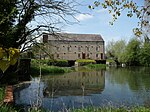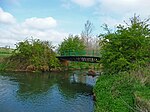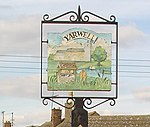Fotheringhay Castle

Fotheringhay Castle, also known as Fotheringay Castle, was a High Middle Age Norman Motte-and-bailey castle in the village of Fotheringhay 3+1⁄2 miles (5.6 km) to the north of the market town of Oundle, Northamptonshire, England (grid reference TL061930). It was probably founded around 1100 by Simon de Senlis, Earl of Northampton. In 1113, possession passed to Prince David of Scotland when he married Simon's widow. The castle then descended with the Scottish princes until the early 13th century, when it was confiscated by King John of England. By 1220, Fotheringhay Castle was controlled by Ranulf de Blondeville, 6th Earl of Chester. In January the following year, it was briefly captured by William II de Forz, 3rd Earl of Albemarle, in his rebellion against King Henry III. Forz abandoned the castle, Henry III took it under his control, and Fotheringhay remained in royal hands until the reign of Edward II. It was a favoured residence of the Dukes of York, and King Richard III was born there in 1452. It was also the final place of imprisonment of Mary, Queen of Scots, who was tried and executed in the castle in 1587. The castle was dismantled in the 1630s and most of the masonry was removed, leaving only the earthworks. The site is protected as a Scheduled Monument and is open to the public.
Excerpt from the Wikipedia article Fotheringhay Castle (License: CC BY-SA 3.0, Authors, Images).Fotheringhay Castle
Woodnewton Road,
Geographical coordinates (GPS) Address External links Nearby Places Show on map
Geographical coordinates (GPS)
| Latitude | Longitude |
|---|---|
| N 52.5243 ° | E -0.4362 ° |
Address
Fotheringhay Castle
Woodnewton Road
PE8 5HZ
England, United Kingdom
Open on Google Maps










